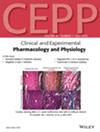Tanshinone IIA ameliorates the development of dermal fibrosis in systemic sclerosis
Abstract
Objectives
We previously revealed the role of tanshinone IIA (TAN IIA) on endothelial cells and the impact of TAN IIA on the endothelial-to-mesenchymal transition in systemic sclerosis (SSc). In this study, we sought to further determine whether TAN IIA can directly act on the skin fibroblasts of scleroderma and look into its underlying anti-fibrotic mechanisms.
Methods
Bleomycin was used to establish the SSc mouse model. After TAN IIA treatment, dermal thickness, type I collagen and hydroxyproline content were measured. Primary fibroblasts were acquired from SSc patients and cultured in vitro, and the effects of TAN IIA on proliferation, apoptosis and the cell cycle of fibroblasts were detected.
Results
In a bleomycin-induced SSc model, we discovered that TAN IIA significantly improved skin thickness and collagen deposition, demonstrating a potent anti-fibrotic action. TAN IIA inhibits the proliferation of skin fibroblasts derived from SSc patients by causing G2/M cell cycle arrest and promoting apoptosis. Additionally, TAN IIA downregulated extracellular matrix gene transcription and collagen protein expression in skin fibroblasts in a dose-gradient-dependent manner. Furthermore, we showed how TAN IIA can reduce the activation of the transforming growth factor-β (TGF-β)/Smad and mitogen-activated protein kinase (MAPK)/extracellular signal-regulated kinase (ERK) pathways, which are important factors in SSc.
Conclusions
In summary, these data suggest that TAN IIA can reduce SSc-related skin fibrosis by modulating the TGF-β/Smad and MAPK/ERK signalling pathways. More importantly, our results imply that TAN IIA can directly act on the skin fibroblasts of SSc, therefore, inhibiting fibrosis.

 求助内容:
求助内容: 应助结果提醒方式:
应助结果提醒方式:


